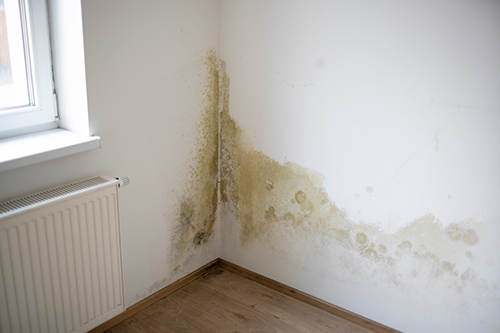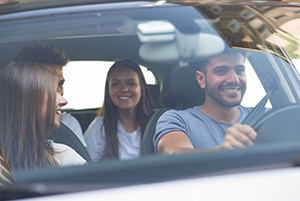
Whether you've been hauling large trailers for years or you're about to embark on your first family vacation with a small travel trailer, towing isn't something to be taken lightly.
To pull a trailer behind another vehicle, a driver needs to develop a whole new set of skills. Just the process of hitching and unhitching a trailer from a tow vehicle requires know-how and numerous steps, and forgetting even one crucial element in the process could compromise safety.
Getting Ready for Towing
Check those trailer tires. A lot of people check the tire pressures on their pickup truck, but they forget to check the tires on the trailer. Also inspect the trailer tires for dry rot and cracking, especially if the trailer is stored outside and hasn't been used for months. Even if the tires appear to have plenty of tread, they age over time and that can lead to tire failure. Also, your tow vehicle's tires may require a higher pressure for towing, as outlined in the owner's manual. Don't forget to make sure the wheel lug nuts on the trailer and tow vehicle are tightened to the specified torque.
Make sure your tow vehicle's maintenance is up to date. Towing puts additional stress on the tow vehicle, so before heading out on a towing road trip, be sure your truck has recently had an oil and filter change, the brake pads have plenty of life remaining, the engine coolant is filled to the proper level in the reservoir, and the transmission fluid is topped off, Ibbotson says. It's also a good idea to have your trailer's brakes (if it has them) checked and adjusted, and keep the wheel bearings greased.
Match the hitch ball to the trailer. Make sure the ball on your tow hitch is the same size as the coupler on your trailer. Incorrectly sized hitch balls are the No. 1 cause of trailer accidents. Hitch balls typically come in three sizes: 1⅞ inches, 2 inches, and 2 5⁄16 inches.
Don't get stuck on the side of the road. Always make sure you have at least one spare tire for your trailer. You'll also want a lug nut wrench specific to your trailer's wheels, as well as a jack that will work properly with your trailer in case you need to change a flat tire on the side of the road.
Use trailer safety chains. All trailers should have safety chains that hook up to the hitch. Always cross the trailer's safety chains, don't just run them straight. If anything were to happen and the trailer got disconnected from the tow vehicle, the crossed chains will form a ‘cradle' for the tongue of the trailer to fall down onto, instead of digging into the pavement. The chains should have enough slack to permit sharp turns but not drag on the road.
Check trailer lights. Before hitting the road, double check to make sure the trailer's electrical wiring system is properly connected to the tow vehicle. Inspect the wires by hand; they should be loose enough to be able to make turns without getting disconnected from the tow vehicle, yet not so loose that they touch the road. With a partner to visually confirm, check that the trailer's running lights, brake lights, turn signals, and hazard lights are all working in correlation with the tow vehicle.
Choose the right hitch. Some vehicles come with factory-installed tow hitches, but for those that don't, finding the right hitch is important. Visit your local trailer rental company and explain what you intend to tow. A professional there can give you proper guidance. A trailer hitch should be connected to the tow vehicle's frame, not the bumper.
Consider getting tow mirrors. If your trailer is wider than your tow vehicle, look into getting factory or wider aftermarket tow mirrors to help see the trailer's blind spots while driving and to aid rear visibility when backing up. You need all the mirror width you can get when you're towing a trailer. Many new trucks and SUVs are also available with blind spot warning systems that not only help with the truck's blind spots but also give warnings for the entire length of the trailer.
Get a larger fuel tank. Some full-sized pickups can be ordered with a larger than standard fuel tank—a good idea if you plan on doing a lot of towing. You generally use more fuel while towing, and stopping at small, remote gas stations is not always easy when towing a long, tall trailer.
Use wheel chocks. When unhooking the trailer from the tow vehicle, place wheel chocks (sturdy, wedge-shaped blocks) in front of and behind the trailer's tires to ensure the trailer doesn't roll away when it is released from the tow vehicle.
Key Driving Tips for Safe Towing
Know your trailer. "In many cases, the trailer weighs more than the truck. All that extra weight behind the truck will have a huge impact on the truck's ability to stop quickly and navigate sharp turns. Height can also be an issue, as travel trailers can be much taller than the truck, so keep clearances in mind when pulling into gas stations or low bridge situations.
Make wider turns at curves and corners. Because your trailer's wheels will end up closer to the inside of a turn than the wheels of your tow vehicle, the trailer tires are more likely to hit or ride up over curbs. Safe towing requires that the driver take constant care to give a wider berth than usual around any corner.
Allow for longer stopping distances. Stopping distances will increase from what your tow vehicle can normally achieve on its own, because of the added weight of the trailer. This means you'll need to be more attentive to vehicles stopping suddenly ahead of you when towing, and begin braking sooner than if you weren't towing.
Drive in the right lane on highways. Try to drive in the right lane as much as possible, so you can use the extra stopping room of the right shoulder of the road in case you need to brake suddenly. Driving in the right lane will also make it easier to get over to the shoulder in the case of a tire blowout.
Adjust trailer brakes according to load. Many trailers have electric brakes, and the power level can be adjusted by the driver if the truck is fitted with an optional in-vehicle trailer brake controller system. It's important to adjust how heavily the trailer's brakes are applied.
Don't ride your truck's brakes on long downhills. Shift the truck's transmission to a lower gear to help slow the vehicle and take some strain off of the brakes. Many of today's pickup trucks have a tow/haul mode that, when the driver engages the system, will automatically downshift the transmission when it senses the truck is on a long downhill. Applying the brakes at intervals to keep the speed in check (as opposed to constant application on the brake pedal) will help keep the brakes from overheating.
Use a spotter when backing up. Have someone outside at the rear of the trailer while backing up whenever possible; mirrors—even wide tow mirrors—typically can't provide all the visibility you may need, particularly in situations where there are other vehicles, objects, or people in close proximity.
Practice driving with a trailer. "Before hitting the road, it's a good idea to practice accelerating, backing up, braking, making wide turns, and using your sideview mirrors. This is especially important if you are brand-new to the art of towing a trailer behind your vehicle.
Disconnect wiring before launching a boat. Disconnect the trailer's wiring from the tow vehicle before backing the trailer into the water at a boat launch. This will avoid any electrical problems that might arise from submerging the trailer's lights in the water.
Check your route ahead of time. Some roads don't allow trailers on them, and certain roads also have weight, height, and width limits. Planning your route ahead of time will save you from the hassle of having to backtrack to find roads that allow your rig.
Source: consumerreports.org





